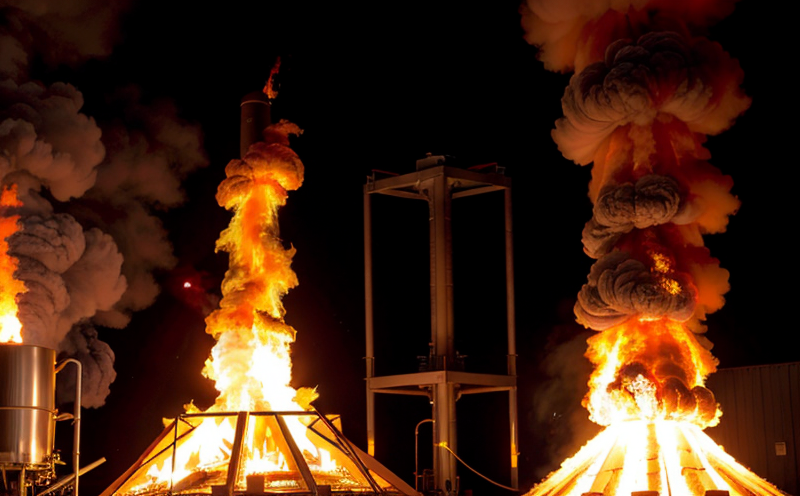Infant Formula Chemical Safety Testing
The safety of infant formula is paramount due to its critical role in providing essential nutrients and protecting against harmful contaminants. This service focuses on ensuring that infant formulas are free from dangerous chemicals, heavy metals, and other potential hazards that could adversely affect infants' health.
Infant formula manufacturers must adhere to strict regulations set by international standards such as ISO, ASTM, EN, IEC, and specific guidelines issued by bodies like the Food and Drug Administration (FDA) in the U.S. and the European Medicines Agency (EMA).
The testing process involves multiple stages designed to identify potential risks early in the product lifecycle. The first step is raw material analysis where all ingredients are scrutinized for harmful substances. This includes heavy metals, pesticides, and other contaminants that could be present due to agricultural practices or processing.
Once the raw materials pass initial screening, they undergo rigorous chemical composition testing. This involves determining not only the nutritional content but also ensuring the absence of toxic compounds. Techniques such as gas chromatography-mass spectrometry (GC-MS) and inductively coupled plasma mass spectrometry (ICP-MS) are commonly used to achieve this level of accuracy.
Another crucial aspect is microbiological testing, which ensures that the formula does not contain harmful bacteria or pathogens. This includes both aerobic and anaerobic cultures, as well as specific tests for potential contaminants like E. coli.
The physical properties of the infant formula are also evaluated to ensure consistency across batches. Parameters such as moisture content, pH levels, and particle size distribution are measured using precision instruments designed specifically for food analysis.
Environmental impact assessments may be conducted to evaluate the sustainability aspects of the manufacturing process, although this is more about the production environment rather than the product itself. However, it provides a holistic view of the entire supply chain from ingredient sourcing to final product.
The final step in ensuring infant formula safety involves stability testing over extended periods under various conditions. This helps determine how long the product remains safe for consumption after packaging and during storage.
By adhering to these stringent protocols, manufacturers can guarantee that their products meet rigorous quality standards set forth by regulatory bodies worldwide. Regular audits and updates based on new findings or changes in legislation further reinforce continuous improvement efforts within the industry.
Applied Standards
To ensure consistency and reliability across different laboratories globally, infant formula chemical safety testing follows several internationally recognized standards:
- ISO 17025: This standard specifies general requirements for the competence of testing and calibration laboratories. It ensures that labs maintain high levels of technical capability and quality management practices.
- ASTM E1484: Used to measure moisture content in materials, including infant formula, this method provides precise measurements essential for maintaining product integrity.
- EN 15632: Specifies the requirements for analytical methods used for the determination of certain contaminants in baby food. Compliance with these guidelines is crucial for ensuring safety standards are met.
- IEC 60601: While primarily applicable to medical devices, some elements can apply indirectly to infant formula where electrical components might be involved during manufacturing processes or packaging.
These standards provide a framework that ensures consistency and reliability in testing procedures, helping to protect public health by minimizing risks associated with contaminated products.
Scope and Methodology
The scope of infant formula chemical safety testing encompasses several key areas:
- Raw Material Analysis: Ensuring that all ingredients used in the formulation are safe for infants.
- Chemical Composition Testing: Determining the exact composition of each ingredient to confirm compliance with nutritional profiles and absence of harmful chemicals.
- Microbiological Evaluation: Checking for the presence of any microorganisms that could pose risks to infant health.
- Physical Property Assessment: Evaluating physical characteristics like moisture content, pH levels, and particle size distribution to ensure consistency between batches.
The methodology involves detailed sampling techniques followed by advanced analytical methods tailored specifically for food analysis. For instance, GC-MS is used extensively for detecting trace amounts of contaminants that might be present in minute quantities but still pose significant health risks when consumed regularly over time.
Sample preparation plays a critical role in achieving accurate results. This includes homogenizing samples to ensure uniformity before extraction and purification steps are carried out using appropriate solvents. Extraction methods vary depending on the type of contaminant being sought; for metals, aqua regia is often used, whereas organic compounds may require different approaches.
Data interpretation requires expertise not only in chemistry but also statistics, as patterns must be discerned from large datasets generated during testing processes. Advanced software tools assist scientists in analyzing complex data sets efficiently and accurately interpreting their findings.
Eurolab Advantages
At Eurolab, we bring together decades of experience in chemical analysis alongside cutting-edge technology to offer unparalleled services for infant formula chemical safety testing:
- State-of-the-Art Facilities: Our labs house some of the most advanced equipment available today, ensuring precise measurements and reliable results.
- Experienced Staff: With experts in various fields including chemistry, biology, engineering, and statistics, our team is well-equipped to handle diverse testing scenarios.
- Comprehensive Reporting: Beyond just numbers, we provide detailed reports that explain what each result means in practical terms for manufacturers.
- Continuous Improvement: Regularly updating our methods based on latest research findings and changes in regulatory requirements ensures we remain at the forefront of industry best practices.
We pride ourselves on delivering accurate, timely results while maintaining strict adherence to international standards. This commitment has earned us a reputation as leaders in this field, trusted by numerous companies worldwide.





